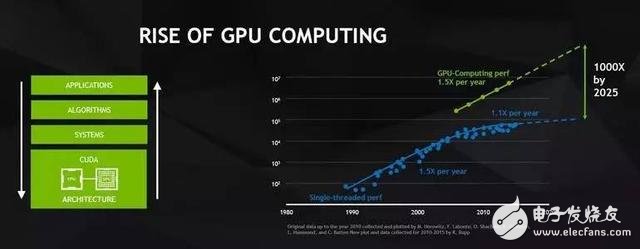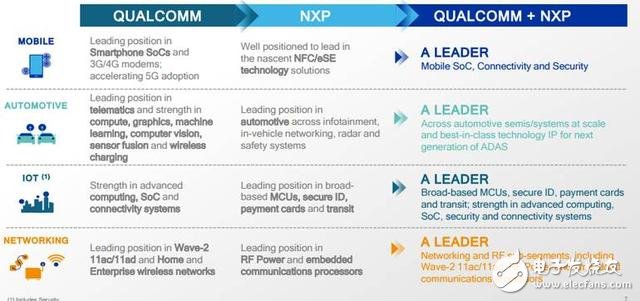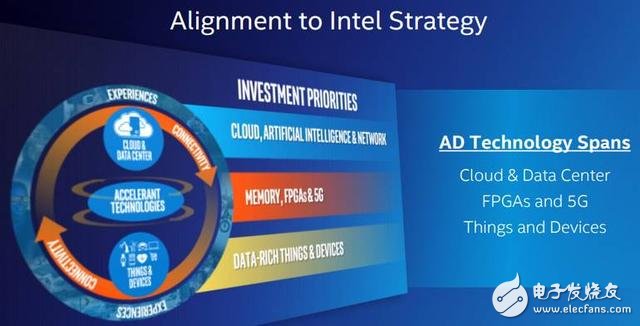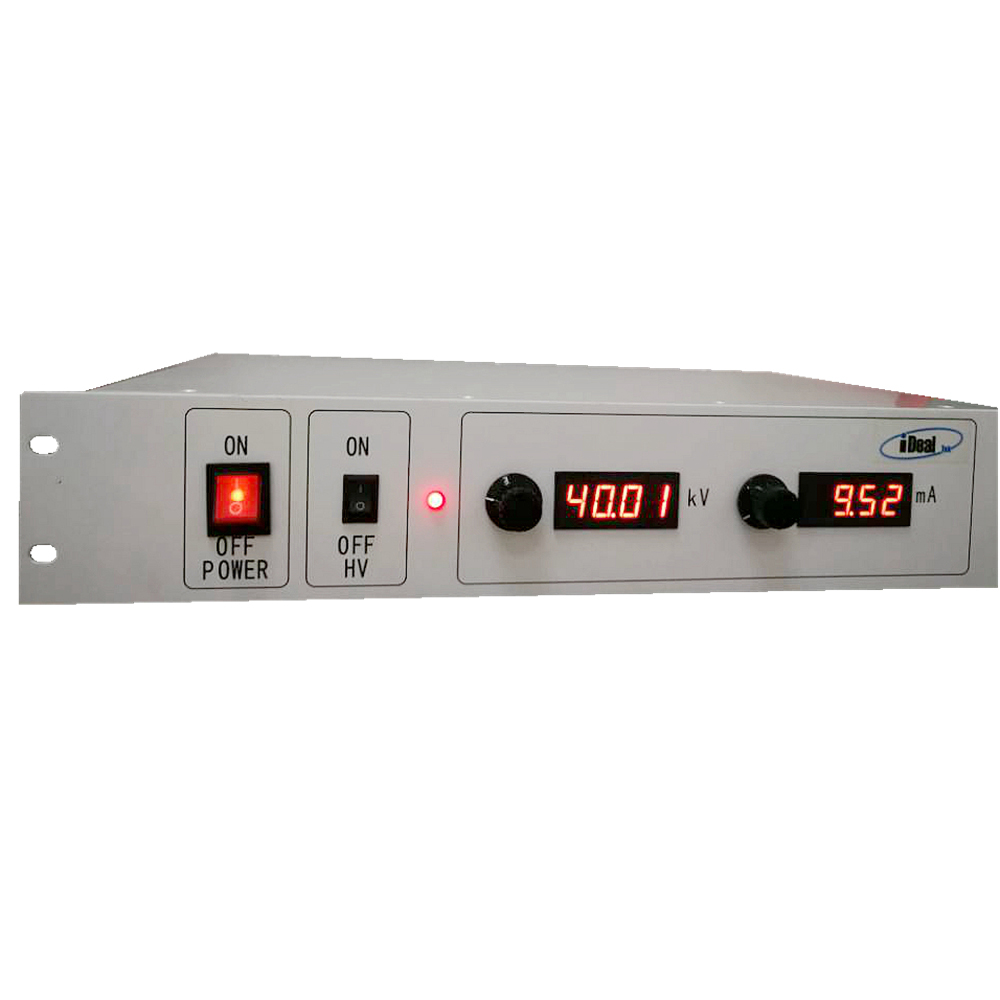Artificial intelligence, cloud computing, big data and the Internet of Things, coupled with a significant increase in the proportion of mobile devices, are all rewriting the "social hierarchy" of the semiconductor industry. The reorganization of this order will be very interesting to observe.
In this new social order, new ways of working (such as AI) are forcing customers to design their own processors. The dominance of companies dominated by the semiconductor industry, such as Intel, may be weakened.
ARM has become a data data center. Old challengers, such as AMD, will return to the GPU-based return, although this is the area of ​​Nvidia's domination. In addition, don't forget the Internet of Things, this is another market trend that may bring huge benefits to Qualcomm.
Intel CEO Brian Krzanich concluded after the company's strong performance in the second quarter: "We continue to see fierce competition in our various business lines. This is the truth of the attractive market we are involved in. Competition makes us More powerful, we are also prepared for this," he said.
Let's see what is happening:· Apple, Microsoft and Google are all developing their own chips to handle artificial intelligence and other work needs. The goal is to process the algorithm without going to the cloud to find the answer. In the emerging AI chip industry that challenges giants such as Intel and Nvidia, Google and Microsoft's attempts are the most eye-catching, and Apple's efforts cannot be ignored. Apple has designed its own processor for mobile devices for many years, and it is widely believed that they are developing a chip to enhance the artificial intelligence application of Apple's mobile phone.
· Numerous startups are trying to develop their own deep learning chips, such as Groq, which was founded by former Google engineers involved in TPU development. “Companies such as Intel and NVIDIA are always marketing the products they have been selling,†said Linley Gwennap, founder of the Linley Group, which focuses on semiconductor industry analysis. “But these leading cloud computing companies and start-ups are making progress in research and development. Quickly because they saw both their own computing centers and the needs of the vast market."
Big data and AI workflows, as well as high-performance computing and analytics, are increasingly being built around GPUs. This trend has already made Yingwei a key corporate player and a new life for AMD. NVIDIA's stock has risen wildly.
· Intel is moving from PC to data center and Internet of Things. In fact, Intel is known for its CPU, but it's also worth noting that Altera, which the chip giant bought, has a programmable custom processor. These programmable chips are also used in AI and other novel workflows. Intel processors also support cloud providers in many cases, but Intel's impact is certainly the biggest.
· The high months passed by did not go well. The licensing model was criticized for being sued by Apple and other companies. Just a few years ago, Qualcomm was often seen as the next Intel. Qualcomm dominates mobile devices and has autonomous driving and server industries.
· AMD can be seen as a balance between Intel and NVIDIA. Data centers like secondary suppliers, and AMD has a stable market demand. At the same time, AMD's efforts on desktops and servers may also affect Intel.
ARM is famous on the mobile side, but it can also be a threat to server providers. ARM is the intellectual property owner of most major mobile phone processors, and it is likely to become a major player in the Internet of Things.
· We can continue to list more, but the trend is clear: Intel and Qualcomm's once dominant world has been broken down by AI, analytics, big data, and new job tasks. The world order of processors is now constantly changing.
The AI-driven processor is highly competitive, and the semiconductor world order is being subverted.
The following are observations of several major companies:NVIDIA

The foundation of this company is the strongest, no matter how the tasks that need to be handled change. NVIDIA has long seen the potential of GPUs in the data center and has made some big corporate-level bets. Regardless of whether the Nvidia GPU is for cloud computing or data centers, the company has already done a good card slot.
2. AMD

The company achieved solid growth in the second quarter, but the profits were minimal. In his speech, AMD CEO Lisa Su talked about the value market, which is the traditional AMD territory. But she spent a lot of time talking about the potential of the data center:
Our investment in GPU computing and Radeon InsTInct is continuing to accumulate. In June, we launched the first Vega-based Radeon InsTInct data center product. These new GPU accelerators will significantly improve performance and efficiency, and reduce the difficulty of deploying machine learning and high-performance computing. We also demonstrated servers powered by AMD's EPYC SoC and four Radeon InsTInct MI25 accelerators, which together provide breakthrough performance of 100 teraflops.
Su added that server manufacturers, contract manufacturers and cloud providers have a high interest in EPYC. The point of competition is that Intel and NVIDIA have the size and pricing power, and the more competitive AMD is likely to have a greater player response. Su said AMD is still full of confidence.
"Obviously, we will continue to see fierce competition in the market. This is an exciting market. Some people will say that from the product point of view, there has been a slight decline. But our team's own products feel good. Because it performs very well today, it sees where they will be in the next 18-24 months, so we will take great care to ensure that we stay ahead of our product information."
Why is AMD important? Powerful AMD means a strong secondary supplier to the data center, cloud computing and high performance computing markets. Competition will reduce costs.
3. Qualcomm

Although the focus is on mobile devices, please don't forget that Qualcomm will put NXP into use through the acquisition. And this reality means that Qualcomm will become an Internet of Things and connected car players. Not surprisingly, Intel is also paying attention to these markets. The acquisition of NXP is expected to be completed by the end of 2017, which will provide Qualcomm with approximately $30 billion in annual revenue and some new markets. The combination of Qualcomm and NXP will be a force in the IoT market. In other words, Qualcomm's footprint will go far beyond wireless, Snapdragon and the upcoming 5G transformation. In addition, Qualcomm expects to ship processors to the data center by the end of the year.
4. Intel
The debate about where Intel's future will go is going on. Intel has a dominant position in the data center and has some potential new markets, but moving to parallel computing and the Internet of Things may be difficult. Jefferies analyst Mark Lipacis downgraded Intel's stock rating earlier this month because of competitive pressure from Nvidia, AMD and ARM. Intel bought Mobileye, and its real purpose may be to thwart Intel's efforts to connect the cloud to the cloud and data center.
Lipacis said: "We believe that computing is facing a shift to a parallel model. Our field survey shows that Intel's Xeon/Xeon PHI platform is at a disadvantage compared to NVIDIA under new parallel work tasks, and we expect it to be traditional. In the task, Cavium's ThunderX and AMD's EPYC will also gain market share."

For its part, Intel is doing everything it can to prove that the skeptics are wrong. Intel's second quarter report showed that data center group revenue was 4.4 billion US dollars, an increase of 9% year-on-year, and Internet of Things sales was 720 million US dollars, an increase of 26%.
One of the wild cards that Intel has is that no matter what the processor makers get, Intel's manufacturing technology can turn into cash flow.

Lipacis believes that Microsoft's support for data center ARM is a watershed, and Intel will lose some data center share due to multiple competitors.
High Voltage Laboratory Power Supplies
The LTP series laboratory high-voltage power supply is a high-voltage power supply specially designed for high-voltage laboratory applications with high precision, high stability, and low ripple output characteristics. Built in 19 inches, 2U standard chassis with designed output power at 1KW and output voltage ranges 1KV to 60KV.

After optimizing the output stability and output ripple on the basis of the 1KW high-voltage power module, the stability and ripple of the high voltage lab power supplies can reach the level at 0.1%.
The high-voltage laboratory power supply is also a constant-voltage and constant-current type high-voltage power supply. The output voltage and current can be continuously adjusted from 0 to the rated value via the added control potentiometers added to the front panel, high resolution LEDs display for output KV and mA are also added for intuitive measuring of high voltage laboratory bench.
The lab high voltage power supply is also equipped with DB9 interface as standard. Customers can apply 0-10V signals and dry contact signals to the interface according to our interface definition to achieve comprehensive control and monitoring functions on the power supply, like high voltage start / stop, output setting and reading.
The LTP series laboratory high voltage power supply is equipped with complete protection functions, which can deal with sparking, short circuit, overload, load discharge and other situations.
At present, the high-voltage laboratory power supply is mainly used in Laboratory power, High-voltage test stands, Electrostatics, Capacitor / Insulations testing and Electrophoresis applications.
High Voltage Lab Power Supplies, High Voltage Laboratory Power Supplies, High-voltage Lab Power Supplies, Laboratory High Voltage Power Supplies, Lab High Voltage Power Supplies
Yangzhou IdealTek Electronics Co., Ltd. , https://www.idealtekpower.com